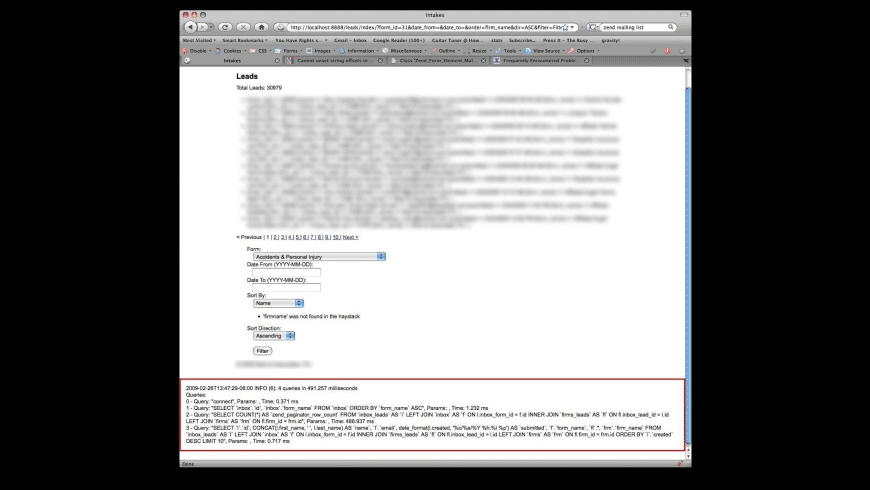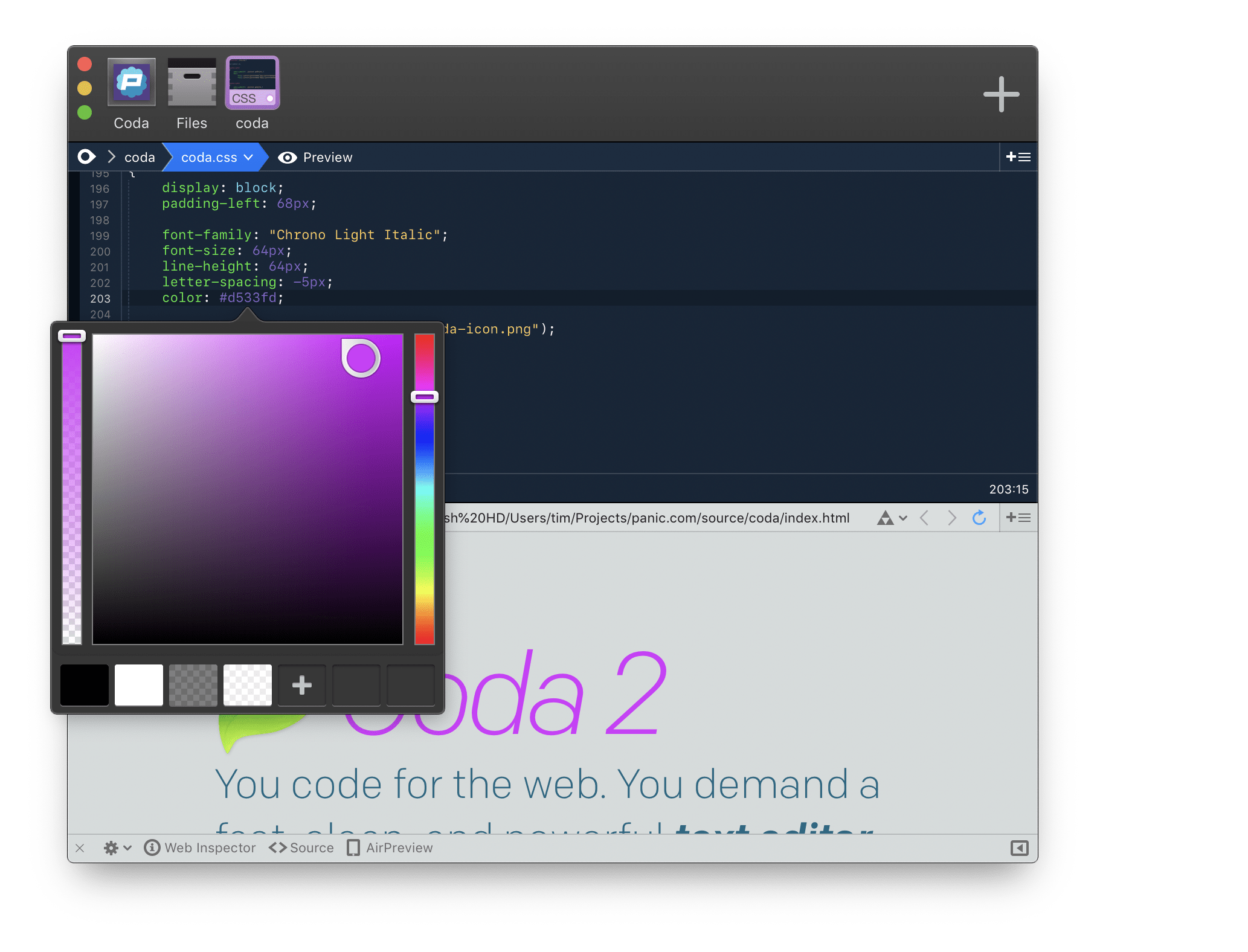Coda 2 0 6 – One Window Web Development Suite
Coda 2 0 6 – One Window Web Development Suite
Sysinternals Suite.; 2 minutes to read +1; In this article. By Mark Russinovich Updated: September 17, 2020. Download Sysinternals Suite (34.5 MB) Download Sysinternals Suite for Nano Server (7.2 MB) Download Sysinternals Suite for ARM64 (7.3 MB) Introduction. The Sysinternals Troubleshooting Utilities have been rolled up into a. In the Target Folder window, in the Select the installation folder field, type the location where you wish to install Red Hat Development Suite and then click Next to continue. The Confirmation window lists the components that are available for download and installation through Red Hat Development Suite. Coda is a commercial and proprietary web development application for macOS, developed by Panic. It was first released on April 23, 2007 and won the 2007 Apple Design Award for Best User Experience. Coda version 2.0 was released on 24 May 2012, along with an iPad version called Diet Coda. Although formerly available on the Mac App Store, it was announced on May 14, 2014 that the update to Coda.
Download Coda 2.6 for Mac free latest version offline setup. Coda 2.6 for Mac is a professional application for developing web applications with a powerful code editor and a variety of development options.
Coda 2.6 for Mac Review
A powerful web development environment, Coda 2.6 for Mac comes with a professional set of tools and intuitive options that makes it possible for the users to develop any kind of web applications with more control over the code. With a simple and straightforward user interface, the users can get complete control over the web code and easily design, debug and test the web applications.


This powerful application has the ability to import all the necessary files for a web application as well as provides a professional set of tools for running the dynamic web applications. It can also connect to the database while the website is running and allows the users to make changes at runtime. Make use of the terminal, code editor, and many other powerful features to work on the web applications. All in a nutshell, it is a reliable application for developing static or dynamic web applications with great ease.
Features of Coda 2.6 for Mac
- Powerful IDE for developing web applications
- Simple and straightforward application
- Straightforward environment with simple tools
- Develop any kind of static or dynamic websites
- Supports connecting to the database
- Dynamically make different changes to the applications
- Importing all the necessary files
- Create, design, debug and test the applications
- Powerful set of tools for setting up connection protocol
- Edit the source code with the built-in code editor
- Many other powerful options and features
Technical Details of Coda 2.6 for Mac
- Software Name: Coda 2.6
- Software File Name: Coda2_2.6.10.dmg
- File Size: 76 MB
- Developer: Coda
System Requirements for Coda 2.6 for Mac
- Mac OS X 10.9 or later
- 1 GB free HDD
- 1 GB RAM
- Intel Dual Core Processor or higher
Coda 2.6 for Mac Free Download
Download Coda 2.6 latest version offline setup for Mac OS X by clicking the below button. You can also download JetBrains WebStorm 2019 for Mac
Web development tools have come a long way in just a few short years. Thanks to this progress, we can harness the power of highly tested libraries to improve our workflow and benefit from greater possibilities when it comes to responsive design. Not only that, we can build things together thanks to ever-improving version control systems. From browser add-ons and plugins, to processors that streamline your code, there have never been more possibilities for creating awesome web applications.
But with the number of web dev tools increasing almost daily, finding the best software to get the job done can sometimes feel daunting. To help you out, we’ve created a list of essential tools for frontend development to get you started. If you’re interested in finding out about one in particular, simply select it from the list below.
Not keen on reading? Then watch the video below in which one of our Course Specialists talks through the tools.
1. Sublime Text
Let’s start with the basics: a first-rate code editor – one that features a well-designed, super efficient, and ultra speedy user interface. There are several that do this well, but arguably the best (and most popular) is Sublime Text.
Artfully run by a one-man development team, the secret to Sublime’s success lies in the program’s vast array of keyboard shortcuts - such as the ability to perform simultaneous editing (making the same interactive changes to multiple selected areas) as well as quick navigation to files, symbols, and lines. And when you’re spending 8+ hours with your editor each day, those precious few seconds saved for each process really do add up…
You can start coding with Sublime in this free web development tutorial (no sign-up necessary).
2. Chrome Developer Tools
Wouldn’t it be great if you could edit your HTML and CSS in real-time, or debug your JavaScript, all while viewing a thorough performance analysis of your website?
Google’s built-in Chrome Developer Tools let you do just that. Bundled and available in both Chrome and Safari, they allow developers access into the internals of their web application. On top of this, a palette of network tools can help optimize your loading flows, while a timeline gives you a deeper understanding of what the browser is doing at any given moment.
Google release an update every six weeks – so check out their website as well as the Google Developers YouTube channel to keep your skills up-to-date.
3. jQuery
JavaScript has long been considered an essential front-end language by developers, although it’s not without its problems: riddled with browser inconsistencies, its somewhat complicated and unapproachable syntax meant that functionality often suffered.
That was until 2006, when jQuery – a fast, small, cross-platform JavaScript library aimed at simplifying the front-end process – appeared on the scene. By abstracting a lot of the functionality usually left for developers to solve on their own, jQuery allowed greater scope for creating animations, adding plug-ins, or even just navigating documents.
And it’s clearly successful – jQuery was by far the most popular JavaScript library in existence in 2015, with installation on 65% of the top 10 million highest-trafficked sites on the Web.
4. GitHub
It’s every developer’s worst nightmare – you’re working on a new project feature and you screw up. Enter version control systems (VCS) – and more specifically, GitHub.
By rolling out your project with the service, you can view any changes you’ve made or even go back to your previous state (making pesky mistakes a thing of the past). The repository hosting service also boasts a rich open-source development community (making collaboration between teams as easy as pie), as well as providing several other components such as bug tracking, feature requests, task management, and wikis for every project.
Many employers will look for finely honed Git skills, so now’s the perfect time to sign up – plus it’s a great way to get involved and learn from the best with a wide array of open-source projects to work on.
5. Twitter Bootstrap
Getting tired of typing in that same styling for a container? How about that button that keeps cropping up? Once you start building front-end applications regularly, you’ll start to notice the same patterns emerging.
UI frameworks are an attempt to solve these problems by abstracting the common elements into reusable modules - meaning developers can scaffold the elements of new applications with speed and ease.
The most widely used of these frameworks is Bootstrap, a comprehensive UI package developed by the team at Twitter. Complete with tools to normalize stylesheets, build modal objects, add JavaScript plugins, and a plethora of other features, Bootstrap can dramatically cut down on the amount of code (and time) needed to build your project.
6. Angular.js
HTML is usually the cornerstone of any frontend developer’s toolbox, but it has what many perceive to be a serious flaw: it wasn’t designed to manage dynamic views.
This is where AngularJS, an open-source web application framework, comes in. Developed by Google, AngularJS lets you extend your application’s HTML syntax, resulting in a more expressive, readable, and quick to develop environment that could otherwise not have been built with HTML alone.
The project is not without its critics: some feel that this sort of data binding makes for a messy, non-separated code, but we still think it’s an invaluable skill to have in your front-end kit.
7. Sass
Web dev tools that save time are your best friend and one of the first things you’ll learn about code is that it needs to be DRY (“Don’t Repeat Yourself”). The second thing you’ll probably learn is that CSS is usually not very DRY.
Enter the world of the CSS preprocessor, a tool that will help you write maintainable, future-proof code, all while reducing the amount of CSS you have to write (keeping it DRY).
Perhaps most popular among them is Sass, an eight-year-old open-source project which pretty much defined the genre of modern CSS preprocessors. Although a little tricky to get to grips with initially, Sass’s combination of variables, nesting, and mixins will render simple CSS when compiled, meaning your stylesheets will be more readable and (most importantly) DRY.
Conclusion
Coda 2 0 6 – One Window Web Development Suite Free
If the idea of learning these frontend tools and setting out on a 7-month journey to become a web developer appeals to you, I really recommend you look at the new Full-Stack Web Development Course from CareerFoundry. It’s designed to teach you the core frontend technologies from scratch before proceeding to endow you with much sought-after skills in JavaScript development. You’ll be paired with two experienced developers for online mentorship and tutorship, and there’s a job guarantee: if you don’t get a job as a web developer within 6 months of graduating, you get your money back. Contact a career advisor today to find out more and join our very first full cohort.
Coda 2 0 6 – One Window Web Development Suite
